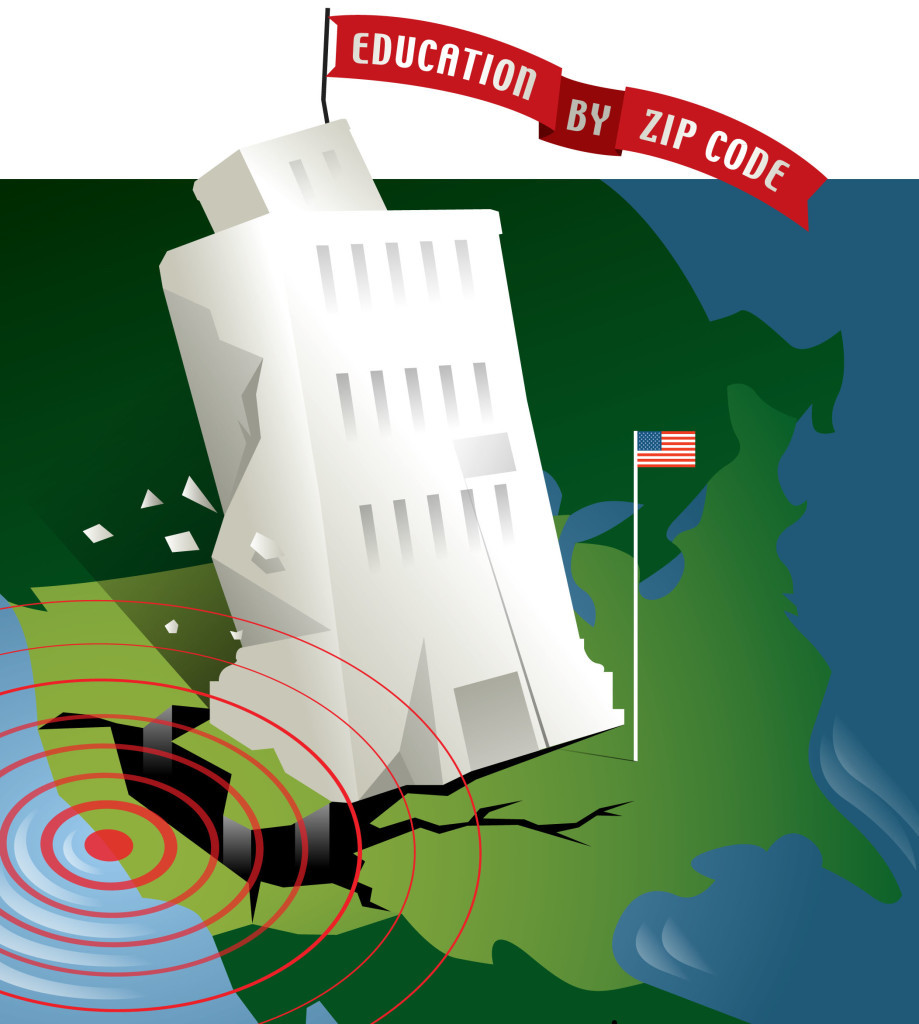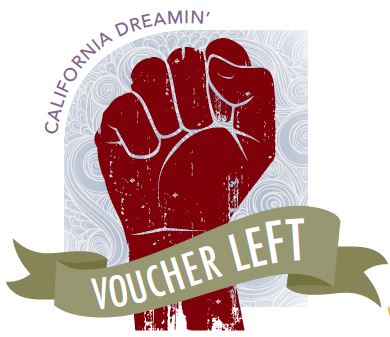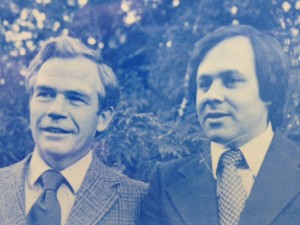
From the Left Coast, an improbable push for school choice revolution
This is the latest installment in our series on the center-left roots of school choice, and Part I of a series within a series about school choice efforts in late ‘70s California.
The woman stopped the professor as they were leaving church near campus.
It was the fall of 1978 in northern California, and Jack Coons was a local celebrity. Or at least as much a celebrity as you can be if you’re a legal scholar who specializes in education finance.
He and Stephen Sugarman, a fellow law professor at the University of California Berkeley, had been central figures in a series of court decisions in the 1970s that would dictate a more equitable approach to how California funds its public schools.
They had also just written a provocative book.
It called for scrapping the existing system of public education, and replacing it with one that gave parents the power to choose schools – even private schools. This stuff about “vouchers” was out there, but intriguing enough to generate some buzz. Newsweek gave it a plug.
My cousin is Congressman Leo Ryan, the woman told Coons. He’s interested in education.
Why don’t you and your wife join us for dinner?
***
It sounds crazy, but that chance encounter could have changed the face of public education in America. For one wild year in late ‘70s California, liberal activists set the stage for the most dramatic expansion of school choice in U.S. history.
Today’s education partisans have no clue it almost happened. But it almost did. And if not for some remarkable twists of fate, it might have.
In the 1960s and ‘70s, school choice was capturing the imagination of progressives who thought poor kids were being savaged by elitist public schools. Liberal intellectuals in places like Harvard and Berkeley were happy to tinker with the notion of school vouchers encapsulated by conservative economist Milton Friedman in 1955. They tried to cultivate varieties that included controls they believed necessary to ensure fairness for low-income families.
John E. “Jack” Coons and Stephen D. Sugarman were among them. And in 1978, they unexpectedly got an opening to put their vision of school choice on the ballot in the biggest state in America.
It started with the dinner invitation.
***
Cue “Staying Alive.”
Disco was king. Jimmy Carter was president. And across the bay from Berkeley, the punk band Dead Kennedys was blasting its first angry chords. But in 1978, Coons and Sugarman still hadn’t gotten the carbon-copy memo that the ‘60s were over.
The ballot initiative they detailed in their 1978 book, “Education by Choice,” wasn’t gradual change, organic growth, nibbling at the edges.
It was revolution.
To put it in today’s terms, the Coons-Sugarman plan would, in one fell swoop, create more educational options for the parents of 4.5 million California students than Florida, the most choice-friendly of states, has done in the past 20 years. Even more than the new, near-universal education savings accounts in Nevada, it would take a wrecking ball to the old order and install a new one overnight.
Would is key.
These were scholars. This was a plan in a book.
Then, suddenly, it wasn’t.
In the fall of 1978, according to Coons, U.S. Rep. Leo Ryan, a respected, three-term California Democrat and former public school teacher, embraced it. What had been a template for consideration by somebody, someday, would soon be a living, breathing plan for action: the “California Initiative for Family Choice.”
Coons, now 86, said he and Ryan decided to shoot for the June 1980 ballot. They would need 553,790 signatures. They had until Jan. 4, 1980 to do it.

He and Sugarman dove headfirst into electioneering, a sphere they knew nothing about, and immediately sent shock waves rumbling across California’s education landscape.
As the first Sunday dawned in 1979, thousands of people strolled out to their drive-ways in palmy Southern California. Awaiting them were these words, beneath a front-page headline in the Los Angeles Times:
The idea is called school vouchers. But this particular form turned out to be too radical even for the 1960s, and it died aborning. Although they were solidly against the concept, professional education groups didn’t really consider vouchers a serious threat then.
Now, however, the voucher idea is alive again, but not just as a theory or a pilot experiment.
A statewide initiative is being proposed to make California the first state to establish an entire system of voucher schools, including public, private nonsectarian and religious.
The story continued:
California’s educational establishment is alarmed as perhaps never before. Top leaders realize that the success of Proposition 13 – and the fact it has not produced the disaster that was predicted by opponents – may mean the public is willing to take a chance on another ‘radical’ governmental reform.
Translation?
This could happen.
***
Private school vouchers for grades K-12 were indeed radical in the 1970s – and obscure. The first major, modern voucher program wouldn’t be created until 1990, in Milwaukee. The first major, modern statewide program wouldn’t be created until 1999, in Florida. The first major, modern program to be used by more than a small percentage of students – well, there still isn’t one. Not in America.
Milton Friedman sprang the idea of vouchers (or refined it, if you’re inclined to give Adam Smith, Thomas Paine and others a share of credit) in 1955, but two decades later it still wasn’t much of a blip on the ed reform radar. A policy cousin, tuition tax credits, was getting attention from both political parties. Some influential academics saw incredible potential.
On the flip side, voters in a handful of states were rejecting ballot initiatives that hinted at public funding for private schools. In 1978, Michigan voters rejected a proposal for vouchers. But, to most people in California and anywhere else in America, the idea might as well have been dropped from the mothership in “Close Encounters.”
To be clear, Coons and Sugarman weren’t just talking vouchers.
They wanted vouchers, and charter schools, and a vehicle that allowed parents to tailor their kids’ educations in a way that foreshadowed the education savings accounts that are being passed in state legislatures today. They also wanted a raft of regulations they deemed necessary to protect the interests of low-income families.
They wanted to change it all. And all at once.
Maybe they weren’t the only ones.
***
Congressman Leo Ryan liked what he heard over dinner at his cousin’s. According to Coons, he subsequently called the law professor and asked to talk about his school choice ideas in more detail.
They met again, this time at a nice restaurant in San Francisco.
Coons was there. Ryan was there. And, according to Coons, so were two of Ryan’s top aides: G.W. “Joe” Holsinger, his veteran chief of staff, and 28-year-old Jackie Speier.
Coons said he gave them the detailed ballot proposal from the Coons-Sugarman book, “Education by Choice.” He said they were excited, and confident it could pass. He said there was at least one other meeting with Ryan and his staffers to go over the details.
Along the way, Coons said, Ryan agreed to be the face of the ballot initiative. Just as importantly, he agreed to raise money for the crucial effort to gather signatures.
An epic thought crossed Coons’s mind.
The sea has parted.
Stay tuned for Part II of “California Dreamin’” next week.
Full disclosure: The author is employed by Step Up For Students, a nonprofit which hosts this blog and helps administer two educational choice programs: Florida’s tax credit scholarship program, the largest private school choice program in America, and Florida’s Personal Learning Scholarship Accounts program, its education savings account for students with special needs.



“Choice in Education” should be the operative. There should be a continuum of venues where an education can be acquired. Schools are a part of that continuum.
Jack, couldn’t agree with you more. Today’s education savings accounts recognize that reality. And both you & Canfield, and Coons & Sugarman, were ahead of the curve with proposed vehicles that recognized educational choice rather than merely school choice.